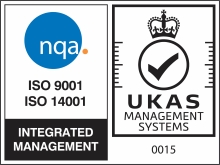• Electroplating is a process whereby an object usually metallic is coated with one or more relatively thin, tightly adherent layers of some other metals (e.g. Zinc), this is the stage where the items are coated with a thin layer of zinc ranging from 5 microns to 15 microns thick
• This layer of zinc acts as a sacrificial layer (i.e it scarified itself to protect the base metal)
• When this zinc layer is oxidised or corroded it formed white rust.
• When the base metal which is steel is corroded it formed red rust.
• The coating thickness depends on the current density (amp/ dm2), Chemical concentration, Time and loading quantity.
• The plating of zinc on steel can be accomplish by either an acid bath , an alkaline bath or a cyanide bath. Each have its advantages and disadvantages. In UEP ,we employed the cyanide process (which provide the most even plating on the surface of the material)
• Electroplating is specified when there is need for surface characteristics that the base metal, selected for cost or structural reasons, does not possess.
* Note: All plating parameters must be within working range. Failure will result in uneven coverage, insufficient thickness, blistering, burned, or even no deposit at all.
Benefits of Zinc Electroplating
Zinc Electroplating provides corrosion resistance to the steel parts by acting as a barrier and sacrificial coating. Zinc is more electrochemically reactive than steel, so when exposed to a corrosive environment, the zinc plating corrodes sacrificially, delaying rust formation on the fastener even after portions of bare steel are exposed.

